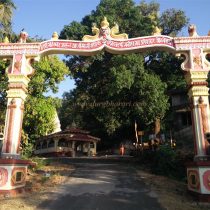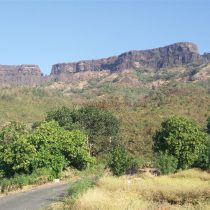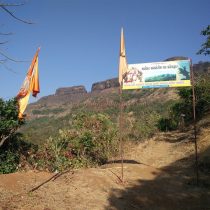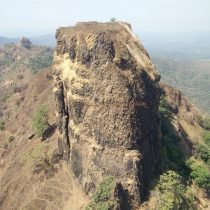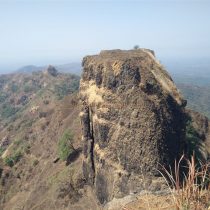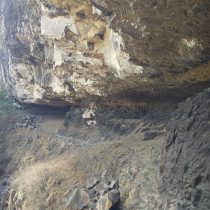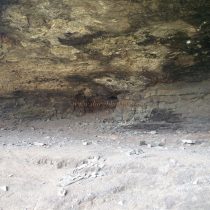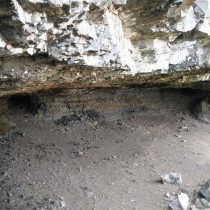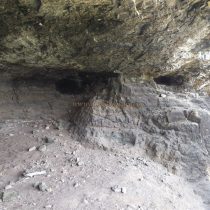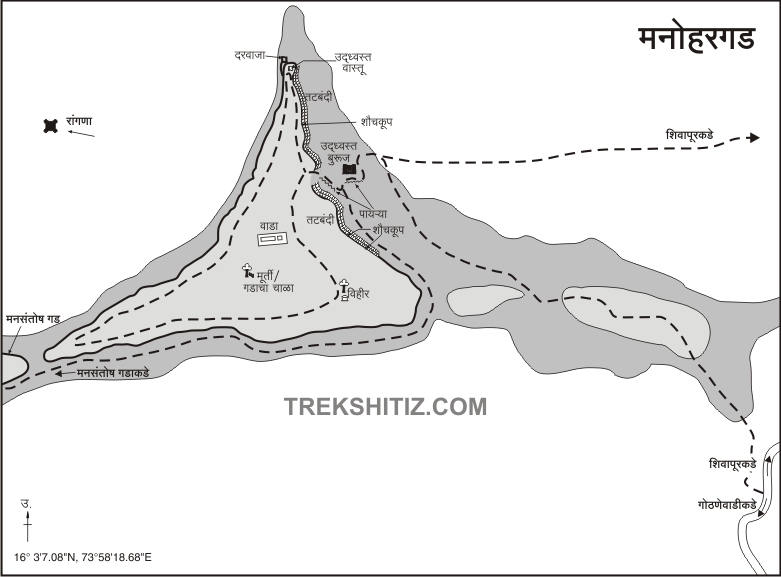MANSANTOSHGAD
TYPE : HILL FORT
DISTRICT : SINDHUDURG
HEIGHT : 2065 FEET
GRADE : VERY HARD
Although there are many wharves to descend from the Sahyadri to Konkan, only a few of them were used for trade. The goods coming to the port of Konkan used to go to the markets on the wharves through these wharf routes. Hanumantghat was one of the major wharves that were used for trades and the protection of the route this wharf, before Shivaji Maharaj’s period, a Rangana fort was built at the top of the wharf and another fort Manohar-Manasantosh at the base. Even though the fort still bears many remnants, the inadequate transport system to reach the fort, which is located in a dense forest is the main reason why most of the trekkers and tourists do not visit this fort. The two forts Manohar-Mansantosh are separated by a small ravine and Manohargad can be easily reached but mountaineering equipment is required to reach Mansantosh fort.
...
To reach the fort, one has to walk from Pethshivapur, which is at the foot of the fort, or from Gothvewadi of Shirsinge village. Both the villages of Pethshivapur and Gothvewadi are on either side of the fort and are connected by road but the road from Shivapur to the gorge of the fort is unpaved and the road from Gothvewadi is paved. As there is only a limited service of S.T buses to both these villages, it is convenient to go to Gothvewadi village by private vehicle. Moreover, as you reach the foot of the fort directly by private vehicle, you not only save about 2 hours but also the labor of climbing is reduced to some extent. To visit Manohargad, first, you have to reach Sawantwadi city. The distance from Mumbai-Goa Highway to Sawantwadi is 506 km and from Sawantwadi to Kalambaste-Shirsinge-Gothvewadi is 30 km. Pethshivapur is at a distance of 40 km from Sawantwadi. It takes two and a half hours to reach the fort from these two villages, but if you have a private vehicle, you can cross the next 4 km uphill by vehicle and save 45 minutes. As soon as you reach Gothvewadi, you can see two beautiful forts including the Mansantosh fort. The larger fort is Manohargad and the small one is Mansantoshgad. At the place where the footpath of the fort starts from the road, a trunk of the fort's hill descends and an arch is erected by the youth of the village. This trunk is known as “Garudjhap”. Climbing up the hill to the left of the fort, we reach the path below the gate of the fort on the east side. The footpath from Shivapur comes here. Except for a part on the ascent, the rest of the area is forested, so it is difficult to feel the heat of the sun. On this road, you can see the outpost of the fort. In 15 minutes we reach the ramparts of the fort by crossing some dilapidated steps and slopes from where the roads coming from Shivapur and Gothvewadi meet. The first north-facing gate of the fort at this place has been destroyed and today there is only one bastion left. A short walk along this path reveals some natural caves. After crossing this cave and turning towards Manohargad, we reach the gorge between Manohar and Manasantoshgad. Here the Mansantoshgad’s pinnacle is held in the right hand and a staircase leads to the foot of the Mansantoshgad fort. After walking a short distance along this path, we reach the ruined steps leading to the fort. There is a footpath carved in the rock to reach Mansantosh fort. The first part of these steps is easy to climb but the steps after it are a bit difficult as the British demolished the fort in 1845 during which the stairs might have been damaged. Since this stage has to be crossed by using certain mountaineering equipment, it is necessary to have information and materials of mountaineering techniques along with the equipment, otherwise, it is better to see the top of Mansantosh fort from Manohargad. After crossing this stage, we take a detour and enter the fort through the ruined entrance of the fort. It takes 2 to 2.5 hours to reach the top of the fort from the Shivapur and Gothvewadi villages. The narrow top of Mansantoshgad is spread over an acre in the eastern and western directions. The height of the fort is 2000 feet above sea level. There are not many remains at the top of the fort, except one or two houses and two dry water cisterns. From the fort, one can see the area of Parpoli Ghat, Narayangad, Mahadevgad, Rangana forts, and a vast area of Konkan. 15 minutes is enough for the whole fort round. Although Manohargad is frequently mentioned in Shivaji Maharaj's time as well as in Karveer's documents, Mansantoshgad is not mentioned. So should this fort have existed during Shivaji Maharaj’s period?. If these two forts are considered as one fort, then the history of Manohargad becomes the history of the Mansantosh fort. Although it is not known who built the fort and when, the fort, which was in the possession of Adilshah after the Bahamani period, came under Swarajya in June-July 1664. At this time Lakham Sawant of Sawantwadi, who was an Adilshahi Sardar, showed good prowess fighting for the fort, but he had to retreat in front of the Marathas. When Aurangzeb came to submerge the Maratha kingdom between 1681 and 1707, he captured many forts but could not conquer this fort. Later, the control of the Manohar-Mansantosh fort passed to Chhatrapati of Kolhapur. In 1834, Chhatrapati Shivaji Maharaj sent Appajirao Jadhav to quell the revolt. It is recorded that they arrested the fort keeper and took 2 cannons from the fort. After the British deprived Karveerkar of his independence in 1844, fort keeper revolted on July 22, 1844. In this revolt, the Manohar-Mansantosh fort brought the British to a good end. To quell the revolt, a detachment led by Major Benbo camped at Nerur village at the foothills of Hanumanth Ghat between Manohargad and Rangana. On October 10, 1844, a detachment from the fort captured Sabnis and Kulkarni from Gothos village and burnt government and private documents in his possession. Fond Sawant Tambulkar was the mastermind of this rebellion. The rebels started their ammunition factory in the vicinity of Manohar fort. Due to all these incidents, the British sent Colonel Wallace and General Delamonti to quell the revolt at Manohar Fort. On 16 January 1845, Colonel Wallace opened fire on the rebels at Shivapur. On January 26, 1845, after being fed up by General Delamonti, Sawant along with his children and Annasaheb fled to Goa by tricking the British at the foot of the fort. After this, the fort fell into the hands of the British.
© Suresh Nimbalkar

